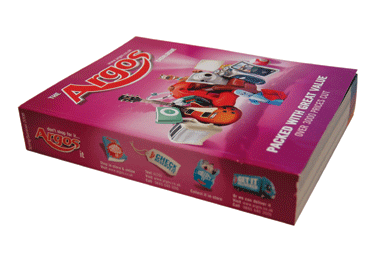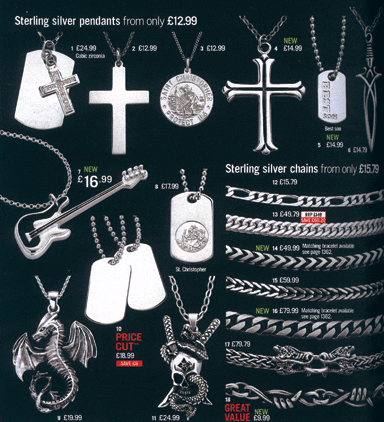
words Charles Holland
I come not to bury Argos but to praise it. I’m a big fan. I had an argument at home recently when my girlfriend suggested throwing out my Argos catalogue collection. I was outraged.
The Argos catalogue is an important archive of popular taste, and this year the store is 35 years old. The latest catalogue is vast – 1,891 pages, which include everything from diamond engagement rings to two-person saunas and jump leads.
Where to start? Perhaps with the spring issue of Argos’ standalone Home catalogue. This seems a good place to take the temperature of high-street design taste in 2008. Well, it would be if it weren’t for the fact that it is still 1997 in the Argos catalogue.
A desperate urge to be tasteful pervades the pages. The victory of polite modernism has created an atmosphere that is fearful of any kind of furnishing faux pas. The living rooms echo not-particularly-hip bar design from a decade ago. Low leather armchairs, big vases and plenty of dark wood predominate. Back in the actual late 1990s, Argos was a much weirder place to be, full of enormous armchairs that looked like volcanic eruptions of fake leather and lurid patterns – the sort of thing you might find in a Bavarian guesthouse. But Argos’ predominant tone today is a kind of risk-free modernism-lite – Ikea without the forced Scandinavian jollity. Occasionally, amid the beige, there is an object that has floral decoration creeping over it like fashion ivy, a tentative nod to more contemporary tastes in furniture. There are even black chandeliers, which means that the neo-baroque revival is now officially over.
Back in the big catalogue, things are much more exciting. Take, for example, the Antony Worrall Thompson four-burner gas barbeque, a commercial-size stainless steel oven that has grown wings, wheels and robotic arms. Or George Foreman’s lean, mean, grilling machine, the ultimate technological derivation of the toasted sandwich maker. Perhaps they’re both hoping that Kirsty Gallacher might pop in for a sausage after burning off some fat on her digital, talking skipping rope.
Argos holds a mirror up to our bizarre materialist tastes. Fans of kitsch may like the solar rock garden lights, LEDs disguised as boulders – a cross between Archigram’s rock plug and an ACME cartoon asteroid. There are three pages devoted to dog settees, one of which has a Union Jack on it and appears next to its owner, a large bulldog. There are 37 pages of TVs, but only one slim-line dishwasher. I know because I just bought it. There is also a mind-boggling amount of jewellery, including a whole page for goths.
The Argos queue is a truly democratic place to be. You’ll be standing in line with a 14-year-old buying a skull and crossbones necklace, a middle-aged man purchasing all 26 figures in the Doctor Who Micro Universe collection, a very large family with a 20-person tent and a 30-something man struggling with a dishwasher.
From its love of crap celebrities to the humbling utility of its queuing system, Argos has a bracing populist appeal. In an age of pseudo-ethical shopping designed to ease our troubled consciences, Argos belongs to a more optimistic era of consumerism – one where cheapness equalled value rather than sweatshop production lines or immoral farming practices. It still remains an utterly unpretentious way to shop. Plus there’s a part of me that will never quite lose the desire to have a racing car-shaped bed.

An entire page of the Argos catalogue is devoted to jewellery for Goths
















